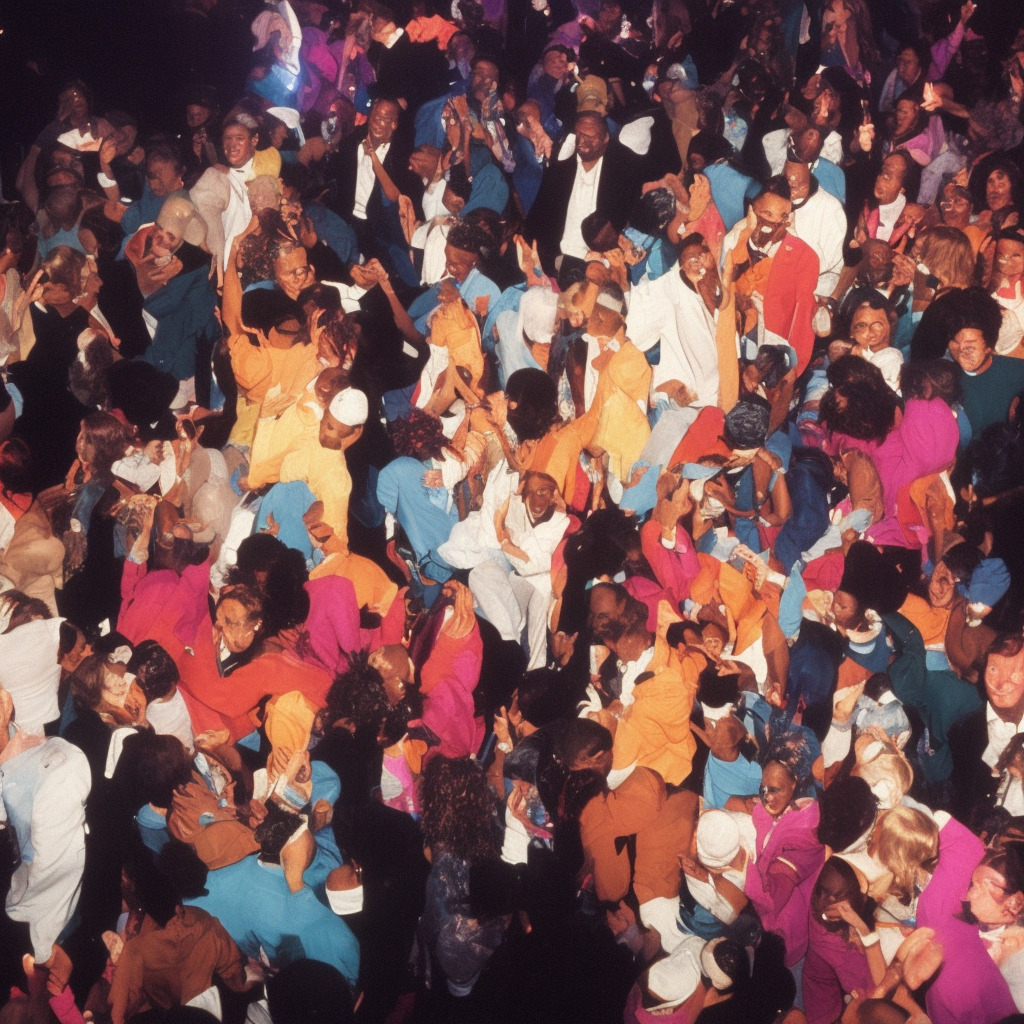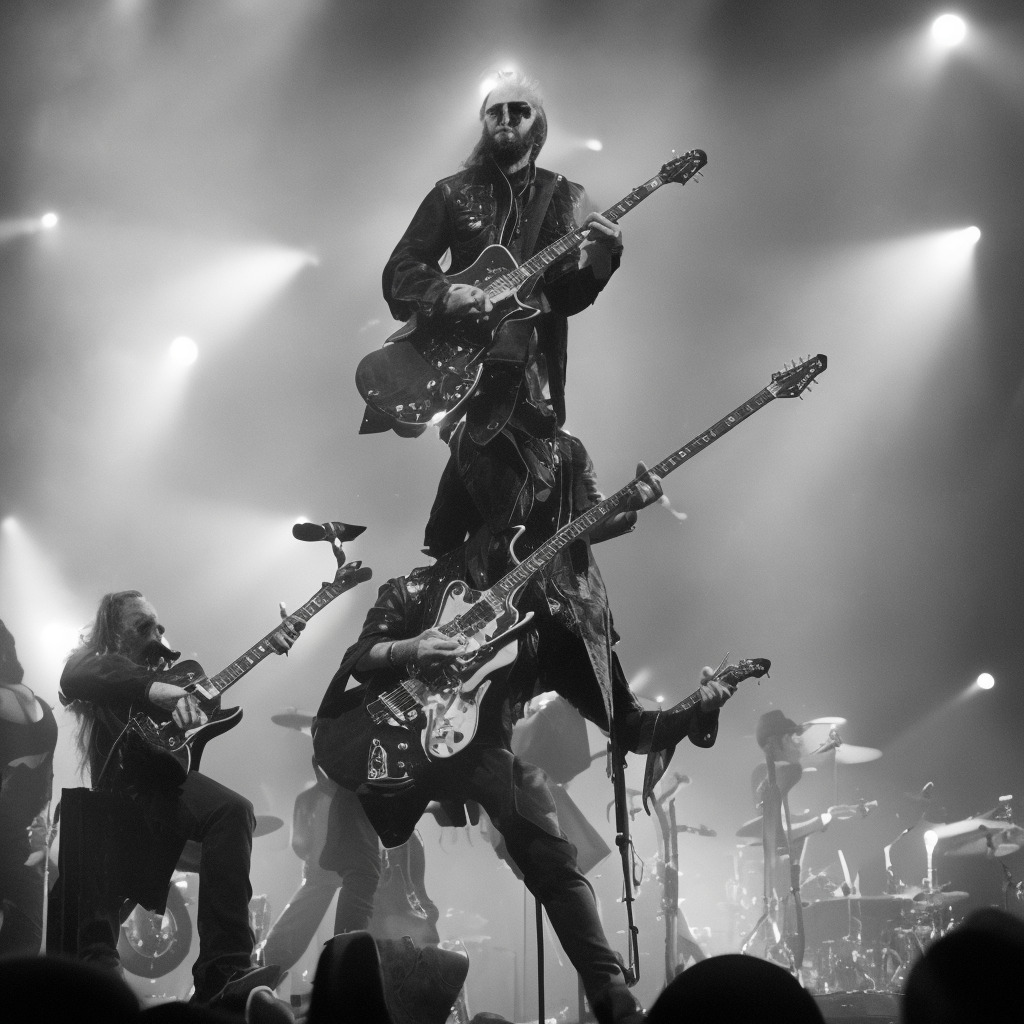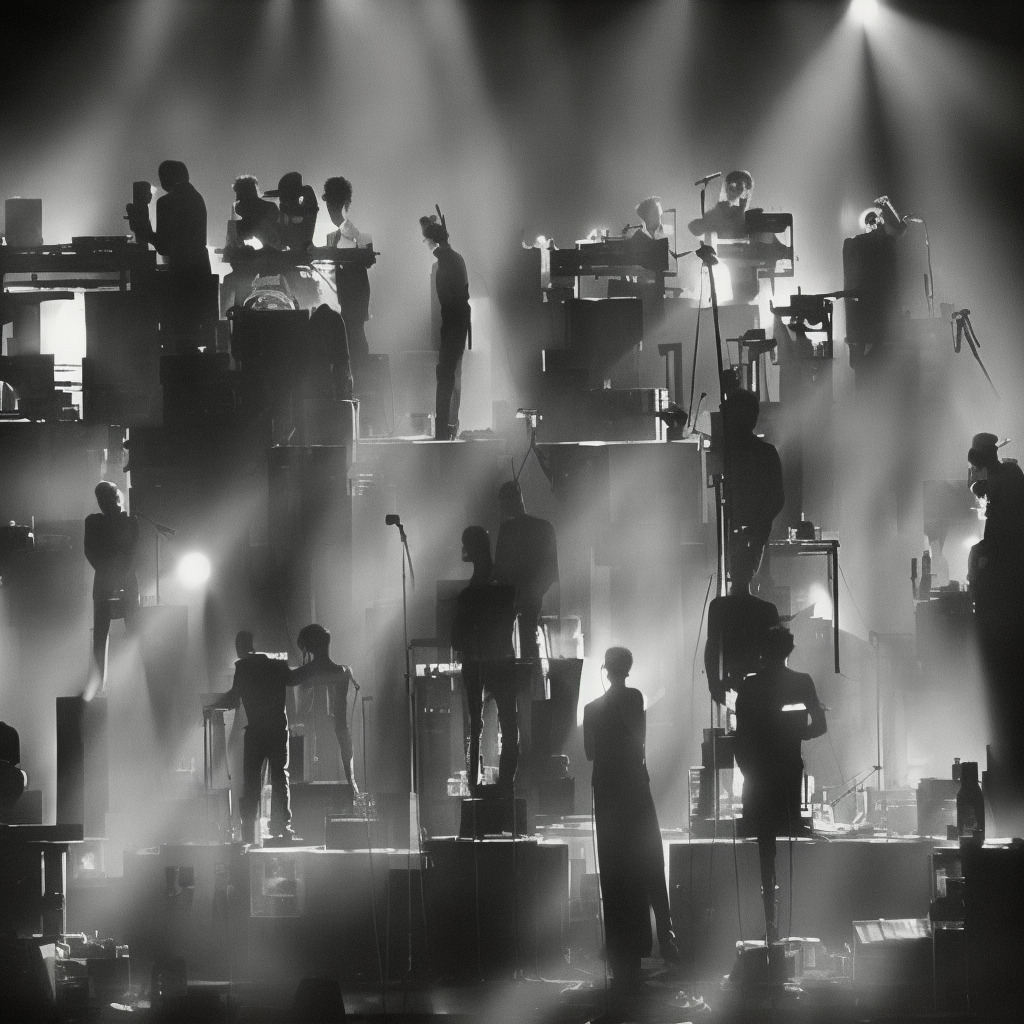🎶Did you know? “One More Night” by Phil Collins almost didn’t make the cut for his “No Jacket Required” album!🤯 Lucky for us, it became his second US #1!🌟 Give it a listen and get lost in the dreamy synth vibes. 🌙✨ #PhilCollins #80sMusic #FunFact #NowPlaying Read about it: tinyurl.com/2pwmrpat
Delving into the Depths of a Timeless Classic
“One More Night: A Timeless Testament to Phil Collins’ Artistic Prowess and Emotional Resonance.”

Despite a vast and diverse discography that has spanned over several decades, Phil Collins remains one of the most renowned and respected musicians in the world of contemporary music. With his roots firmly planted in the iconic progressive rock band Genesis, Collins’ solo career took flight in the early 80s, and he became a household name due to his memorable and emotive tracks. One such track, “One More Night,” showcases the unique blend of pop, rock, and soulful elements that have come to define Collins’ musical style.
Released in 1985 as part of his third solo album, “No Jacket Required,” “One More Night” quickly became a massive hit and solidified Collins’ place in the pantheon of pop icons. The track topped the US Billboard Hot 100 and reached #4 in the UK Singles Chart, demonstrating its international appeal. The song’s slow, sultry tempo and delicate arrangement, paired with Collins’ distinctively emotive vocals, create a powerful ballad that has continued to resonate with audiences over the years.
Phil Collins’ experience as a drummer certainly contributes to the subtle yet effective percussion elements woven throughout “One More Night.” However, it’s his vocal delivery that truly breathes life into this timeless classic. The raw emotion conveyed through his voice and lyrics tell a story of heartache and longing, culminating in a chorus that has become a touchstone for many who have experienced unrequited love.
While Collins’ solo career boasts numerous awards and accolades, including an Academy Award, several Grammy Awards, and a Brit Award, it’s worth noting that not all of his work has been met with universal praise. Some critics argue that his forays into more experimental or overly commercial territories can miss the mark, detracting from the sincerity and inherent talent that shine through in tracks like “One More Night.” However, this only serves to make the successes of his most impactful songs all the more significant.
In conclusion, “One More Night” remains a shining example of Phil Collins’ artistic prowess and versatility as a musician. This track encapsulates the essence of his talent for blending heartfelt storytelling with unforgettable melodies and intricate musical arrangements. As a result, “One More Night” has secured its place in the annals of pop music history as one of Phil Collins’ most enduring and beloved songs.
Charting the Journey of a Timeless Classic
“One More Night: Phil Collins’ Timeless Classic That Captivated Charts & Generations Worldwide”

When it comes to chart success, “One More Night” by Phil Collins has certainly made an impression in the music world. Released on February 19, 1985, as the second single from his third solo album “No Jacket Required,” the song proved to be a massive hit not only in his home country of the United Kingdom but also across the Atlantic in the United States.
Upon its release, “One More Night” garnered immediate attention and started climbing the charts. In the UK Singles Chart, the song debuted at an impressive No. 40 on March 2, 1985. It continued its ascent and, after six weeks, peaked at the No. 4 position on April 13, 1985. This marked Phil Collins’ eighth top 10 hit in the UK, proving that “One More Night” was indeed a beloved addition to his growing repertoire of hits.
However, the song’s success didn’t stop there. In the United States, “One More Night” truly showed its staying power. Debuting on the Billboard Hot 100 at No. 50 on March 9, 1985, the song steadily climbed to the top, reaching the much-coveted No. 1 position on April 20, 1985. This was a significant achievement for Phil Collins, as it was his second No. 1 single in the US, following his 1984 hit “Against All Odds (Take a Look at Me Now).”
In addition to its chart success, “One More Night” also made a splash on various radio charts, including the Adult Contemporary chart, where it peaked at No. 1 for four consecutive weeks. This demonstrated the song’s wide appeal to a diverse audience.
As a testament to the song’s lasting popularity, various cover versions have been released over the years, with some even charting in their respective countries. This further solidifies “One More Night” as a timeless classic in Phil Collins’ discography.
In summary, “One More Night” not only made an impact upon its initial release but has also continued to be an iconic and beloved song for fans across generations. The chart achievements and trivia surrounding this track are a testament to its enduring appeal and the incredible talent of Phil Collins.
Decoding the Soulful Lyrics of a Timeless Classic
One more night
I’ve been trying ooh so long to let you know
Let you know how I feel
And if I stumble, if I fall, just help me back
So I can make you see
Phil Collins’ 1985 hit, “One More Night,” from the album “No Jacket Required,” is a soft rock ballad filled with melancholic and introspective lyrics. The lines above reveal the vulnerability at the core of the song, as the protagonist pleads for one more chance to make amends and express their true feelings.
Please give me one more night
Give me one more night
One more night ’cause I can’t wait forever
Give me just one more night
Oh just one more night
Oh one more night ’cause I can’t wait forever
The song’s chorus captures the desperate longing for that one last opportunity to salvage a relationship slipping through the protagonist’s fingers. Collins’ emotional voice paired with these lyrics leave a lasting impression on the listener, encapsulating the essence of 1980s heartbreak ballads.
Delving deeper into the song’s meaning, it’s important to note that the 1980s were a time of great change. The era was marked by political and social upheaval, with the fall of communism, the rise of technology, and the spread of consumerism. Amid all this change, love and relationships remained a constant theme in popular music. Phil Collins’ “One More Night” captures the spirit of the time, with its introspective lyrics and heartfelt vulnerability.
I’ve been sitting here so long
Wasting time, just staring at the phone
And I was wondering should I call you
Then I thought maybe you’re not alone
The verses not only reveal the protagonist’s emotional vulnerability but also touch on the uncertainty that comes with navigating relationships. With the shift from traditional courtship to a more complex dating landscape, the themes of doubt and longing in Collins’ song resonate with the experiences of many during the 1980s.
In summary, “One More Night” by Phil Collins is a poignant ballad that speaks to the vulnerability, longing, and uncertainty we face in our relationships. The song’s soulful lyrics and emotional depth capture the spirit of the 1980s, providing a timeless anthem for love and heartbreak that remains relevant to this day.
A Visual Journey: “One More Night” Music Video
Experience an ’80s visual masterpiece with Phil Collins’ “One More Night” music video – a powerful, emotionally-charged walk down memory lane that still captivates fans today.
Phil Collins’ music video for his hit single “One More Night” is a perfect blend of storytelling and artistic expression. Directed by Jim Yukich, an acclaimed music video and television director with a long list of successful projects under his belt, the video was released in 1985 alongside Collins’ third solo studio album, “No Jacket Required.”
The video’s storyline follows the journey of a man, portrayed by Collins, going through a lonely night while reminiscing about a lost love. The setting is an atmospheric, dimly lit room filled with purple hues and soft lighting, which sets a melancholic mood that mirrors the song’s emotional lyrics. Throughout the video, Collins’ powerful vocals and tender piano playing are interlaced with scenes of the singer wandering around the empty room, reflecting on moments from his past relationship.
Production-wise, the “One More Night” music video is a testament to the visual language of the 1980s, featuring multiple camera angles and dramatic close-ups that were characteristic of the era. This visual approach adds depth and dynamics to the storytelling, beautifully complementing Collins’ heartfelt performance.
Although it is unclear how much the budget for the music video was, the artistic direction and the result achieved speak of the dedication and effort put into creating an unforgettable visual experience for the viewers. With Yukich’s artistic guidance, the video does not rely on flashy special effects or elaborate sets, but rather on the raw emotions conveyed through Collins’ expressive storytelling and the evocative setting.
Throughout the years, “One More Night” has become an iconic music video in the realm of 80s pop culture. Fans of Phil Collins have also created their own interpretations of the song through fan videos, YouTube tributes, and other creative outlets, further testifying the lasting impact the song and its accompanying visuals have on the audience.
In summary, the music video for Phil Collins’ “One More Night” is a stunning and emotional visual journey that accompanies the poignant lyrics of the song perfectly. The combination of a passionate performance from Collins, evocative setting, and artistic direction by Jim Yukich creates a captivating piece of art that continues to resonate with fans even after all these years.
Behind the Hits: Phil Collins, the Composer
Phil Collins, the composer behind the hit song “One More Night,” is a multi-talented musician who has created a variety of popular tracks throughout his illustrious career. As both a solo artist and a member of the iconic band Genesis, Collins has been crafting memorable tunes since the 1960s.
Some of his most notable compositions include the chart-topping “In the Air Tonight” and “Against All Odds (Take a Look at Me Now),” both of which showcase his emotive songwriting style and skillful musicianship. Collins has also penned hits for Genesis such as “Invisible Touch” and “Land of Confusion,” which demonstrate his ability to create catchy, evocative melodies that resonate with listeners across generations. With an impressive discography that spans multiple decades and genres, Phil Collins has truly left his mark on the music world as a versatile and accomplished composer.
Award-Winning Chart-Topper and Appearances Beyond Music
From chart-topping triumphs to iconic pop culture moments, Phil Collins’ timeless masterpiece “One More Night” continues to captivate and inspire, transcending generations and genres.

“One More Night” has had its fair share of success since its release, grabbing recognition and awards throughout the years. In 1985, the song became Phil Collins’ second consecutive single to reach the top spot on the US Billboard Hot 100 chart, after “Against All Odds (Take A Look At Me Now)”. Additionally, it held the number one position for two weeks on the Billboard’s Adult Contemporary chart and peaked at number four on the UK Singles chart.
The song’s popularity extends beyond just the charts, as it has made numerous appearances on various media platforms. “One More Night” was featured in the 1985 film “White Nights”, starring Mikhail Baryshnikov and Gregory Hines, further solidifying its place in the world of entertainment. The song’s soothing melody and emotionally charged lyrics have made it a hit in the world of television, with its inclusion in episodes of popular TV shows such as “Family Guy” and “Glee”. Despite not being featured directly in video games, the song still managed to hold a special place in the memories of gamers, as it was often played on the radio stations in the background of the 1980s-themed game “Grand Theft Auto: Vice City”.
Throughout the years, “One More Night” has inspired several artists to produce their own unique cover versions. In 2013, American pop rock band Maroon 5 named their hit single “One More Night” as a nod to Phil Collins’ classic, although the songs differ in their melodies and lyrics. Some lesser-known but equally talented artists, like the Australian singer Amber Lawrence and Dutch vocalist José Hoebee, have also paid tribute to Collins by creating their own renditions of the song.
With the song’s various accomplishments and lasting impact on popular culture, “One More Night” continues to stand the test of time as one of Phil Collins’ most beloved and celebrated tracks. The tune’s smooth and heartfelt essence has resonated with fans and artists alike, proving that it is indeed a timeless masterpiece.
Diving into the Musical Elements
Taking a closer look at the song’s structure, “One More Night” is predominantly written in the key of Ab major, which gives it a warm and uplifting tonality. The overall tempo of the song is relatively slow and steady, clocking in at around 66 beats per minute (BPM). This slow tempo complements the song’s solemn mood, allowing the listener to savor every chord and lyric.
The harmonic progression of “One More Night” is quite straightforward, with a common I-V-vi-IV pattern, which translates to Ab-Eb-Fm-Db in the key of Ab major. This progression provides a solid foundation for the soulful melody and heartfelt lyrics. The simplicity of the chord progression makes it incredibly accessible, and this, combined with the slow tempo, has undoubtedly contributed to the song’s widespread appeal.
The song starts with a gentle keyboard intro, which sets the tone for the rest of the track. The drums, bass, and electric piano join in at the first verse, providing a solid rhythmic foundation and adding depth to the arrangement. Phil Collins’ vocals are the centerpiece of the song, with his distinctively expressive and emotive voice carrying the melody and conveying the bittersweet longing of the lyrics. The arrangement is sparse and uncluttered, allowing the song’s emotional core to shine through.
The song features a few key changes that add variety and dynamics to the overall structure. The first key change occurs at the beginning of the chorus, where the song modulates from Ab major to Bb major, a whole step up. This key change creates a lift in the music that underscores the emotional intensity of the chorus. The second key change happens during the instrumental break, where the song modulates back to Ab major. This return to the original key creates a sense of resolution and familiarity before the final chorus.
The production of “One More Night” is clean and polished, with a focus on creating an intimate and emotional atmosphere. The use of reverb on the vocals and keyboards adds depth and space to the mix, while the punchy drum sound provides a solid and satisfying rhythmic foundation. The overall sound is warm, spacious, and inviting, drawing the listener in and encouraging them to lose themselves in the music.
In conclusion, “One More Night” is a masterclass in songwriting and production, combining a simple yet effective chord progression with heartfelt lyrics and a memorable melody. The song’s slow tempo, key changes, and polished production all contribute to its enduring appeal, making it a classic that continues to resonate with audiences to this day.







